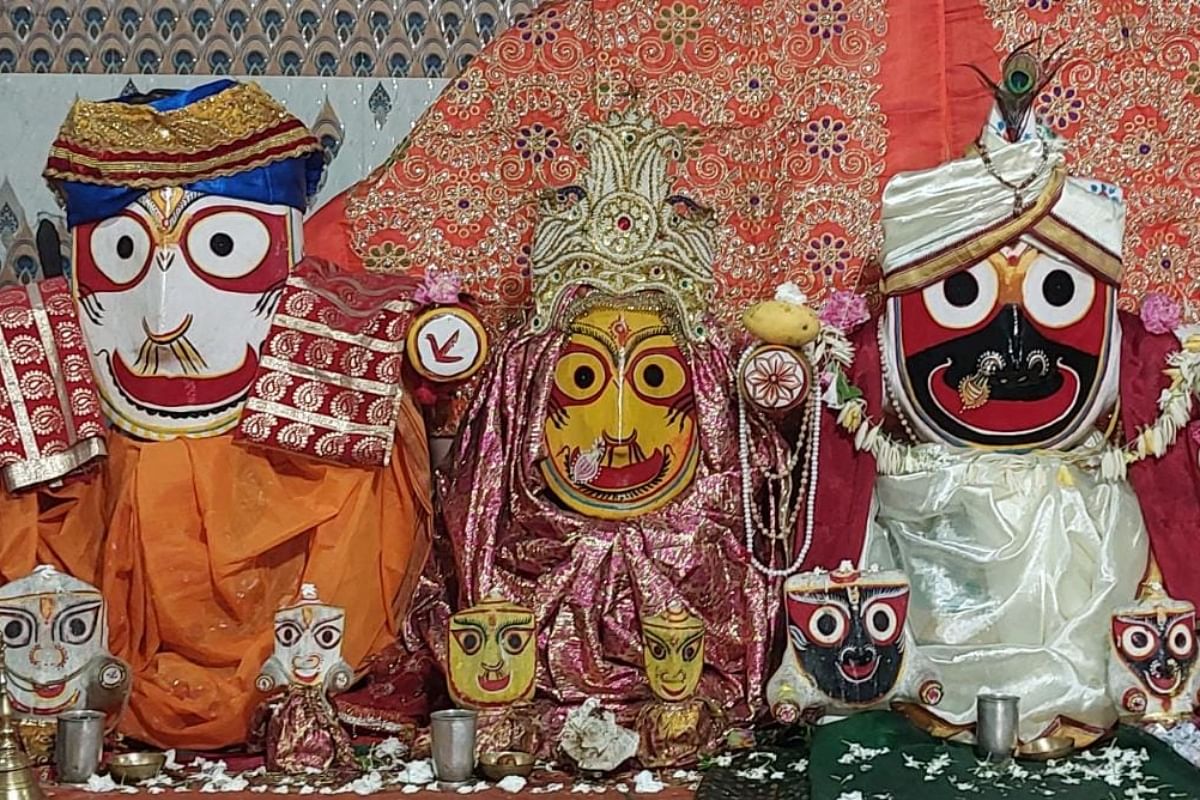Kharsawan, Shachindra Kumar Dash: Seraikela Kharsawan Chaturbhjo Jagannath, Kantha Shobhit Kaustubh…, Jagannath Loknath, Neeladrish: Paro Hari… Special prayers were performed in Jagannath temples of Seraikela-Kharsawan district on Chitalagi Amavasya with chanting. In the local language, people also call it Chitou Amavasya. The priests offered prayers in the Jagannath temples on Monday late evening while performing all the religious rituals. Sandalwood tika was applied to Lord Jagannath with complete rituals. On Chitalagi Amavasya, farmers worshiped in the fields as well. Gandeisuni (snails) and Kasturi are worshipped. Here Chitau Peetha is offered as Prasad. This worship is done for good farming. Farmer families worship for the safety of their crops by making Chitau Peetha in their homes with complete purification and burying it in the fields. On Chitalagi Amavasya, in the Jagannath temple of Haribhanja, according to Odia tradition, Chitau Peetha specially prepared from rice powder is offered to Lord Jagannath, Balabhadra and Goddess Subhadra.
An important ritual of Lord Jagannath
On the day of Chitalagi Amavasya, Lord Jagannath’s forehead is decorated with a golden mark, which is known as Chitta. This is an important religious ritual of Lord Jagannath. It is a religious belief that on the day of Snan Purnima, the funeral pyre of Lord Jagannath, Balabhadra and Goddess Subhadra is opened while bathing in 108 Kalash water. This funeral pyre is lit on Chitalagi Amavasya (Chitau Amavasya), the new moon day in the month of Sawan. A large number of devotees had reached the temple to see this.
Chitau Peetha prepared from rice was offered to Lord Jagannath
On Chitalagi Amavasya, Chitau Pitha specially prepared from rice powder was offered to Lord Jagannath, Balabhadra and Goddess Subhadra as per Odia tradition in the Jagannath temple of Haribhanja. The bhog of Chitau Peetha is offered only once a year on Chitalagi Amavasya. After the puja, prasad was also distributed among the devotees.
Gandeisuni (snails) and musk were worshiped in the fields.
On Chitalagi Amavasya, farmers worshiped in the fields as well. Gandeisuni (snails) and musk are also worshiped in the fields. Here Chitau Peetha is offered as Prasad. This worship is done for good farming. Farmer families worship for the safety of their crops by making Chitau Peetha in their homes with complete purification and burying it in the fields. In this, there is a practice of making chitau pitha and feeding it to the animals to satisfy them, so that the crops of the farmers can be protected.
Chitau Peetha is offered to protect the crops
Normally farmers do paddy crop during the rainy season. Gandeisuni (snails) and other animals destroy the crops of the farmers. In such a situation, the crop is not wasted, for this Chitau Peetha is offered to Gandeisuni (snails) in the letter of Saru.
these are the special things
Chitalagi Amavasya is also known as Chitou Amavasya.
On the day of Chitalagi Amavasya, Lord Jagannath’s forehead is decorated with a golden mark, which is known as Chitta.
Worship was done in Jagannath temples while performing all the religious rituals.
Prabhu Jagannath was given sandalwood tika with complete rituals.
This is an important religious ritual of Lord Jagannath.
Chitau Peetha prepared from rice was offered to Lord Jagannath.
Bhog of Chitau Peetha is offered only on Chitalagi Amavasya.
After the puja, prasad was distributed among the devotees.
Farmers offer prayers for the protection of crops.
Farmers offer chitau pitha to protect the crop.
Gandeisuni (snails) and musk were worshiped in the fields.

